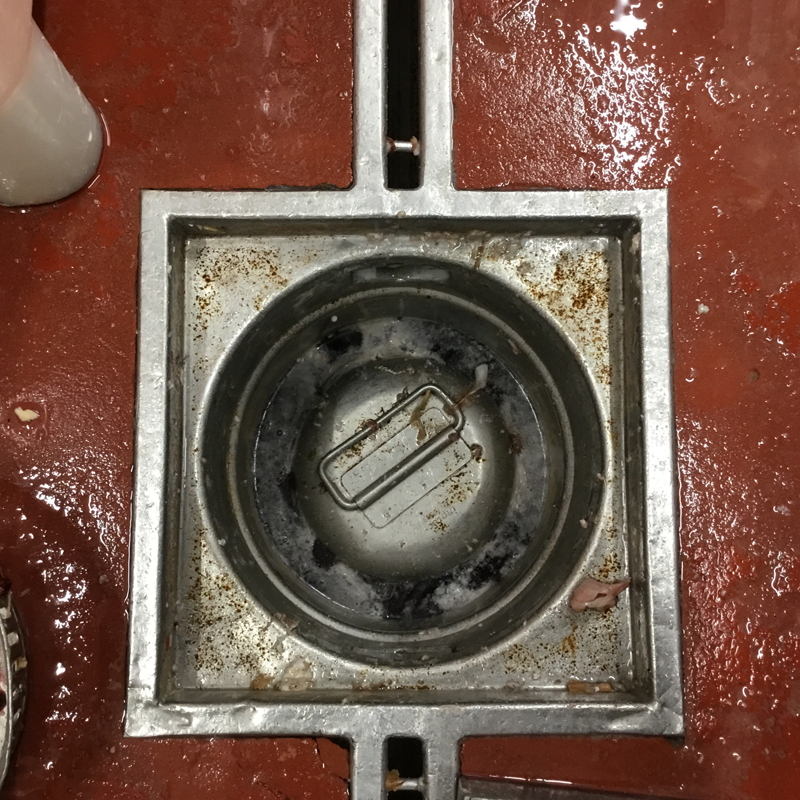L-profile edge case study: Food and beverage industry
The issue
Issues are caused by a large difference between the temperature of a room (15°C) and process / purification water (typically measured at between 65°C to 80°C). The floor is permanently covered with process and cleaning water. The stainless steel drainage absorbs heat faster than the underlying concrete and this creates thermal stress.
The drainage channel expands and the visible channel edge lifts. Due to these displacements, small micro-cracks occur directly where the screed floor and the visible channel edge connect. Subsequently, micro-cracks connect and larger cracks occur around the channel or gully (cracks are typically around 1mm width or larger). Over time the floor will begins to break up around the drainage and cracks will spread across the floor. The cracking is worsened by the dynamic loads of local site traffic (e.g. handling equipment).
- Temperature of water for cleaning procedures: up to 65°C
- Room temperature: +15°C
- Type of production: wet production
- Type of zone: High risk/care zone
- Production equipment: washing machine, boiling areas, cooking equipment, packeging,…
- Flooring: resinous floor
- Drainage: linear channels + point drainages
Secondary consequences
- Erosion of floor structure leads to the formation of mold and bacteria in cracks. This can contaminate food and raw materials.
- Erosion of the floor structure enables water to penetrate the floor construction and in the worst case, can cause water to flow into lower floors.
- Cracks around drainage lead to water penetration into the floor construction, this enables water to migrate under the screed layer to the lowest point of the concrete structure and subsequent causes delamination (peeling and bursting). Further damage to the floor can be caused by the incorrect instalation of the drainage system.
The solution
Use of a flexible joint with L-profile. The flexible joint absorbs the thermal stresses between the floor and the drainage, and allows expansion. The channel does not press on the floor structure. The L-profile provides protection against the dynamic stresses caused by local site traffic such as handling equipment.
